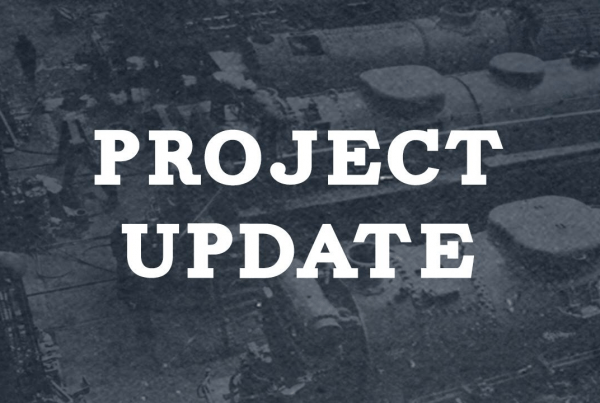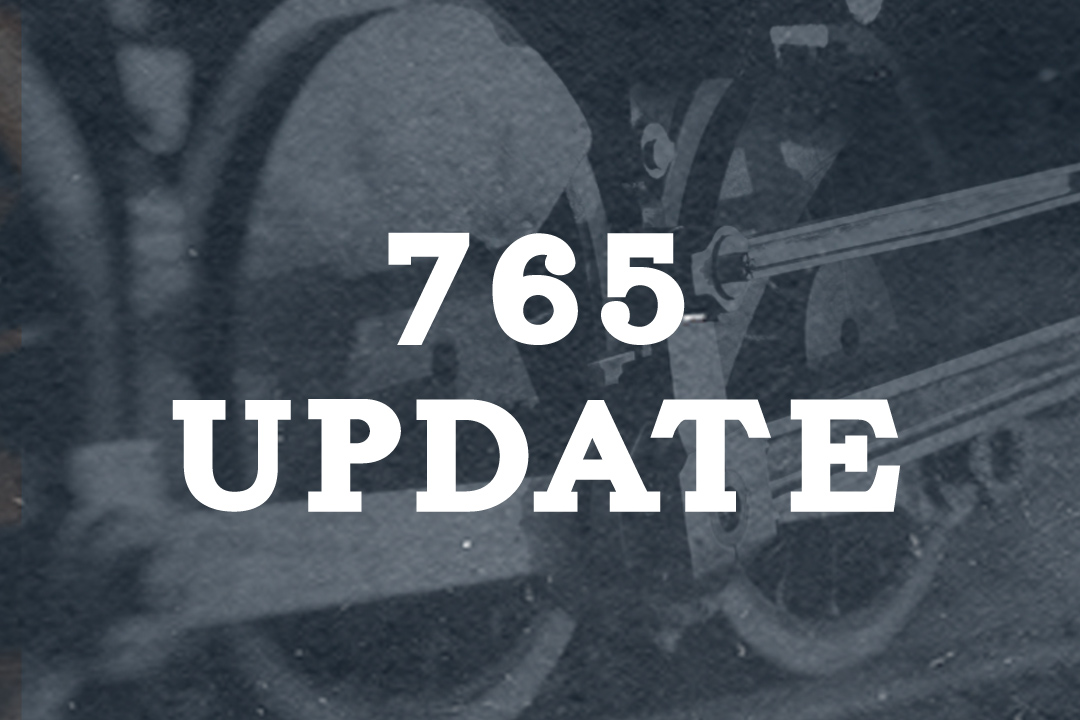Submitted by Steve Winicker.
LAST WEEKENDS SHOP ACTIVITY
Much of the early effort, Saturday was on removing the trucks from the 451 to be exchanged with another set of roller bearing trucks from a donor caboose. Later Chuck and crew spent time on inspecting throttle valves. Jeff Rayner finished drilling out stay bolt tell tales – all of which have now been opened. I spent some time looking for drawings showing the dimensions of shims for the buffer between the engine and tender which we suspect of becoming worn and loose.
Other projects included Mr. Homco reinstalling the rebuilt injection pump on the crane (have yet to get fuel to the injectors), putting a second coat of paint on the box car and started installing grab irons. Austen Rayner tightened up the truss rods under the car. Andrew was hard at work removing old plywood subfloor on the 3671.
UPCOMING ACTIVITIES
Work is picking up on the 765. We need to get the tender and engine separated soon so the drawbars can be inspected. Also planned is to check the wear on the buffer and shim it if needed. The steam dome needs to be removed and a blanking plate installed over the dry pipe to keep water out of the pistons and valves during the hydrostatic test. The interior of the tender tank needs to be inspected for broken swash plates and loose fixtures. The goal is to plan a hydrostatic test early in April followed by internal inspections and putting all back together by May.
SAFETY SENSE
Burn Injuries Receiving Medical Treatment Per Year approximately 500,000
Fire and Burn Deaths Per Year approximately 4,000
Hospitalizations for Burn Injury Per Year… 40,000 total, including 25,000 admissions to hospitals with specialized burn centers
- Burn Causes…46% fire/flame, 32% scald, 8% hot object contact, 4% electrical, 3% chemical, 6% other
- Place of Occurrence: 43% home, 17% street/highway, 8% occupational, 32% other
Although very few burn injuries occur at work compared to home, the risk is still around us. Steam lines, hot machine components and chemicals are just a few of the areas where you have exposure to burn injuries.
Your best protection for these types of exposures is awareness. More often than not, people get burned at work by coming in contact with hot components unexpectedly. They didn’t realize the component was hot or they weren’t aware of their body’s position to the object. Take some extra time when around these areas of the facility and equipment to ensure you know the hazard and make a conscious effort to keep away from these hot components.
The other line of defense for these injuries is to wear PPE when working in close proximity to these burn hazards. Whether using rubber gloves when working with chemicals or thermal gloves when dealing with steam lines, PPE can afford you the protection you need.
A First Aid treatment for mild skin burns is to apply egg whites to the affected area using a sterilize gauze pad from the First Aid kit. Egg whites are rich in collagen which will help to minimize damage to the skin as well as helping to relieve the stinging pain caused by the burn. In the very near future we will have a container of egg whites in the Shop refrigerator for use in burn First Aid treatment.


